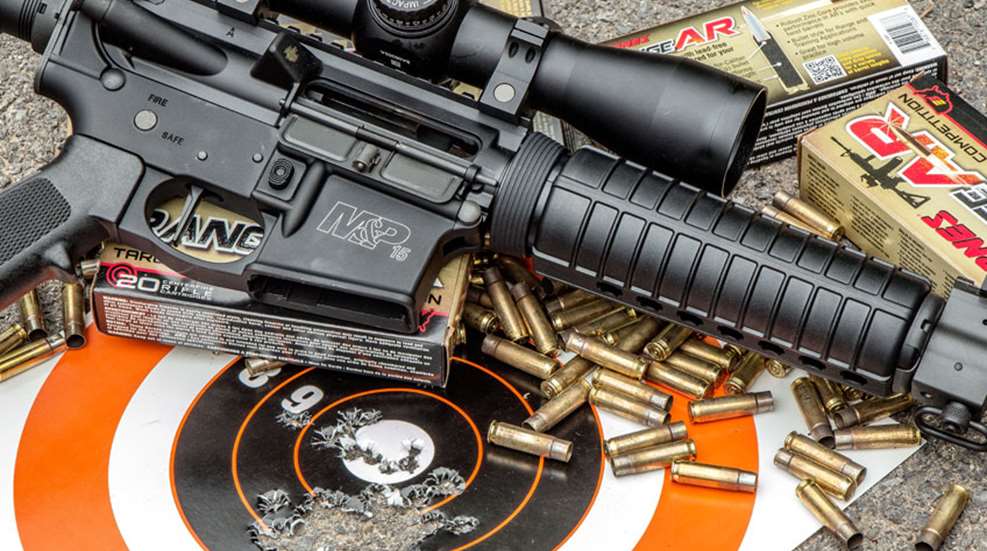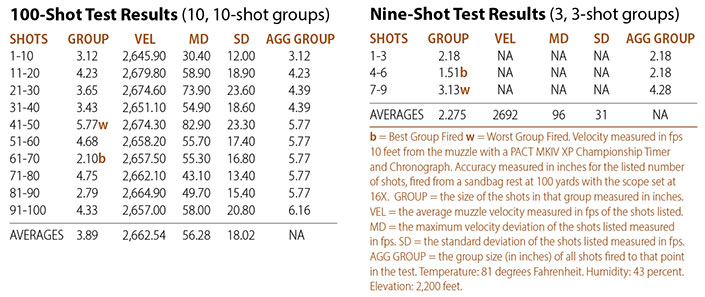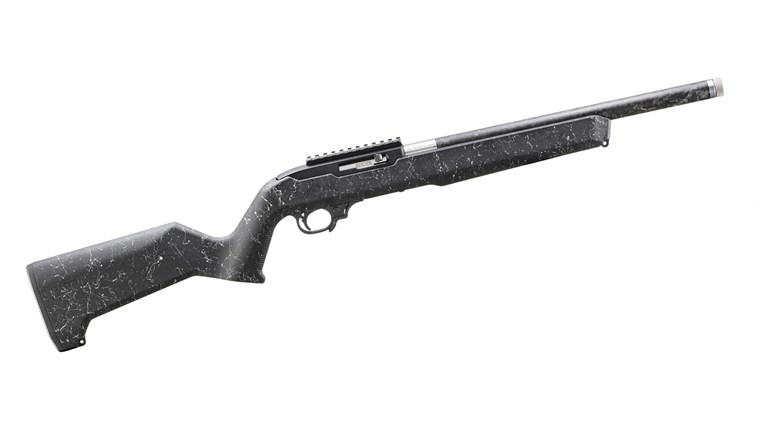
When testing rifle accuracy, shooting a 100-shot group, in 10-shot increments, will give you a very realistic picture of how your rifle and ammo combination performs.
Many shooters reduce rifle-accuracy testing or ammunition testing to less than a box of ammo. This is usually accomplished by firing three- or five-shot groups at 100 yards. The standard test protocol here at Shooting Illustrated consists of five, five-shot groups. As much ammunition and firearms as I test, some unexplained misses over time have convinced me this sort of testing may not realistically represent real-world performance.
To see how illustrative a small sampling might be, I decided to fire 100 rounds of the same ammo, out of the same rifle, during identical shooting and atmospheric conditions. My thinking was 100 carefully fired and recorded shots should provide a more practical picture of performance. The results changed the way I look at performance testing results, and might explain some of the misses we sometimes experience.
The rifle used for accuracy testing was a 16-inch Smith & Wesson M&P15 in .300 BLK. with a 1:7.5-inch twist rate. I mounted a Nightforce ATACR 4-16x42 mm riflescope in Nightforce rings and fired Barnes’ Range AR .300 BLK. 90-grain, OTFB load. It has an advertised velocity of 2,550 fps.
First, I zeroed the riflescope to what I thought was dead-on at 100 yards. I then fired three, three-shot groups. I chronographed those nine shots using a PACT-brand MKIV XP Championship Timer/Chronograph. The average muzzle velocity was 2,691 fps with a maximum deviation (MD) of 96 fps and a standard deviation (SD) of 30 fps. The average group size was 2.27 inches, and with a best group size of 1.51 inches, a worst of 3.13 inches, and an aggregate of 4.28 inches.
Next, I stacked Birchwood Casey’s 12-inch Rigid DH Bull’s-Eye targets 10 deep. By removing one target after every 10 shots I was able to measure aggregate group size in 10-shot increments. Additionally, by placing a new target on top of the stack before firing each group, I got an exact measurement of every group. On average, it took a minute and 48 seconds to fire each 10-shot string and the average time between strings was about 6 minutes.
The average muzzle velocity for 100 shots was 2,662 fps. This was 29 fps (1 percent) less than the average established with the initial nine shots. Average MD was 56.28 fps, 39.72 fps (41 percent) less than the original nine shots. The average SD for 100 shots was 18.02 fps, 12.98 fps (42 percent) less than the first nine. Interestingly, only one 10-shot string came close to recording velocity deviations near those established with the first nine shots.
As for precision, the first surprise was the dead-on zero I thought I’d obtained was not dead-on at all. The center of the shot-out hole in the 100-shot target measured 1.7 inches low and 1 inch right of target center. The tightest 10-shot groups fired—shots 71 through 80—measured 2.10 inches. Expectedly, that group and five others (about half those fired) measured less than the 4.28-inch aggregate of the original nine shots. The average for all 10, 10-shot groups was 3.89 inches and the aggregate was 6.16 inches.
So what can we take away from this method of testing rifle accuracy? First, it would appear a nine-shot velocity test might not represent average performance. Keep in mind; every round was from the same lot number. Does it matter? Not so much with a .300 BLK., likely to only be used at short to moderate range. However, had I been testing ammo intended for long range, the load would likely have been passed over after the first nine chronographed shots, due to a wide velocity variation, which is not consistent with the 100-round test.
With regard to precision, if we’re to take this data at face value we must assume I’m capable of shooting 100 perfect shots. This isn’t just unreasonable, it’s impossible; a percentage of the shots fired had to be influenced by operator error. These shots might be reflected in one of the ways the 100-shot aggregate group was evaluated. I placed a circle, measuring 3.89 inches in diameter—the average for the 10, 10-shot groups—over the center of most of the shots in the 100-shot target. There were only 17 holes outside this area. Might it be reasonable to assume those 17 shots (17 percent) were my fault, negating the 6.16 aggregate group size?
Possibly, but I’m sure this was not the case. I noted the shots I felt I pulled and only a few were outside the area covered by the 3.89-inch circle. It’s my estimation that with this load, in this rifle, you can expect at least 10 percent of the shots fired to land between .10 and 2.27 inches outside of the expected bullet impact area. That’s one shot out of 10 that’s an unexpected miss.
Though a stretch, if we accept this 100-shot accuracy test as being representative, it’s clear simply firing and chronographing a couple three- or five-shot groups is not illustrative of how any rifle/load combination will perform over time. If you want to know what you can really expect from your rifle, every time you pull the trigger on a certain load, you need to evaluate more than one box of ammo.





































